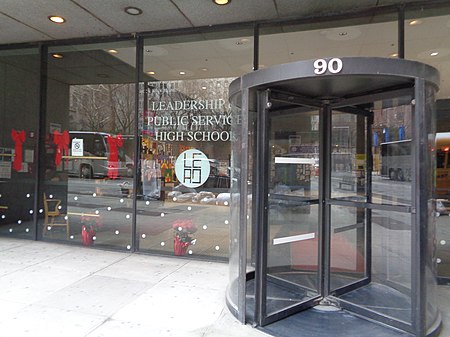Leadership & Public Service High School

Leadership & Public Service High School (formerly known as The High School for Leadership and Public Service) was formed in 1993 in Manhattan as a joint project between Syracuse University's Maxwell School of Citizenship and Public Affairs and the Board of Education of the City of New York, as one of 30 newly formed "small high schools". Among the school's notable founders includes that of Syracuse University Professor Dr. Bill Coplin, S.U. Alumnus Donald Schupak and several members of The Friends of HSLAPS (Now called The Friends of Leadership & Public Service High School). Due to the school's close proximity to the World Trade Center (three blocks south) and Wall Street, it was one of the four high schools in Lower Manhattan area to be displaced by the September 11 attacks.
Excerpt from the Wikipedia article Leadership & Public Service High School (License: CC BY-SA 3.0, Authors, Images).Leadership & Public Service High School
Trinity Place, New York Manhattan
Geographical coordinates (GPS) Address Nearby Places Show on map
Geographical coordinates (GPS)
| Latitude | Longitude |
|---|---|
| N 40.709271 ° | E -74.012094 ° |
Address
High School of Economics and Finance
Trinity Place 100
10006 New York, Manhattan
New York, United States
Open on Google Maps









